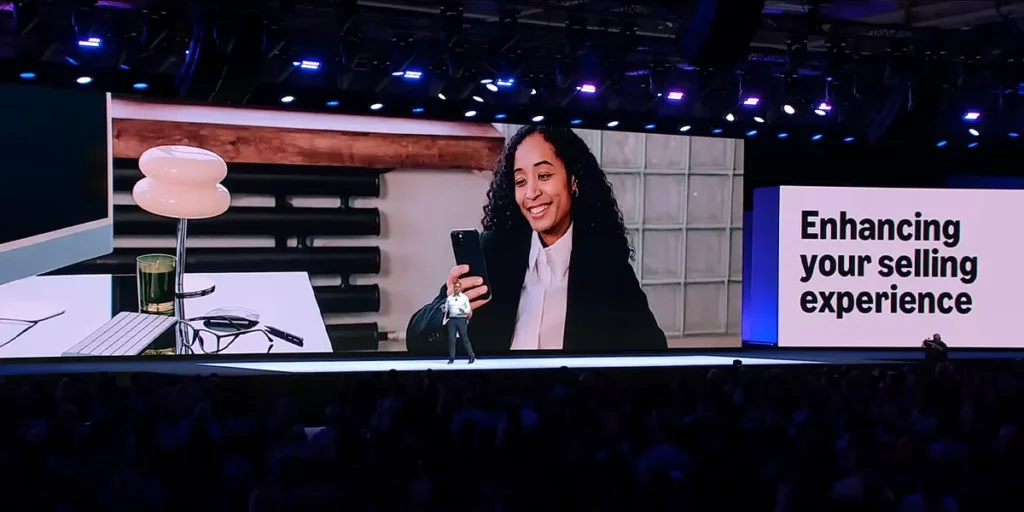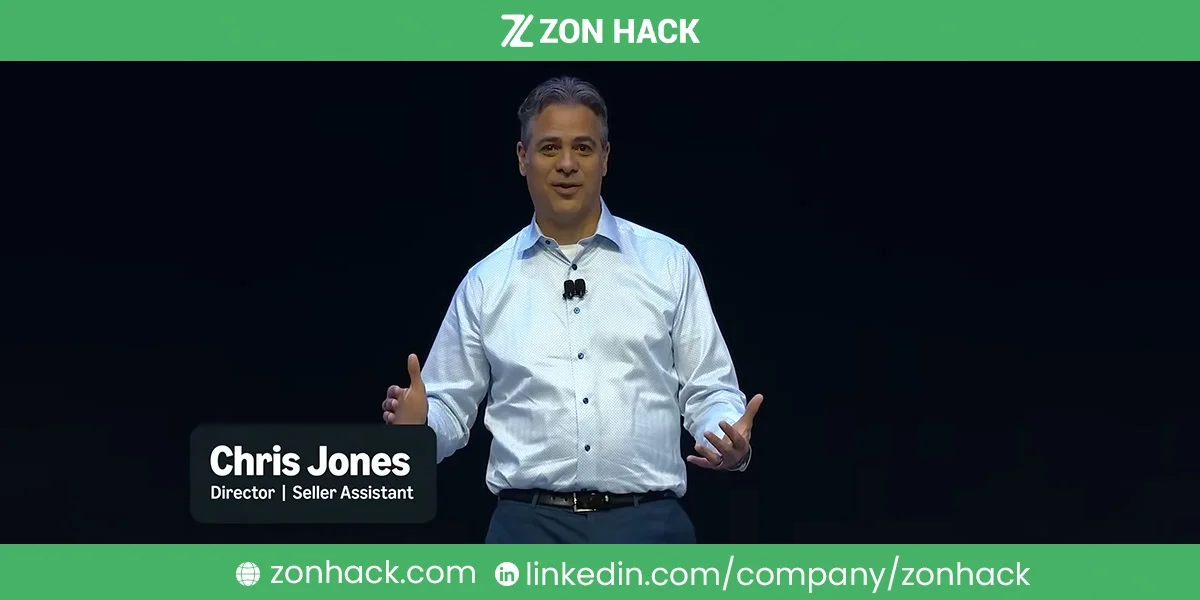Chris Jones on Seller Assistant, rebuilt for real work
Speaker: Chris Jones, Director, Seller Assistant
Who this is for: Seller owners, brand managers, and agency teams who live in Seller Central and want faster paths from question to action.
What Chris put on stage
Chris’s message was simple and important. Seller Assistant has moved from a helpful Q&A surface to a reasoning partner that understands the complexity of global selling. Over the past year Amazon trained it on thousands of Seller Central capabilities and tuned it to handle ambiguous problems. When you ask why sales have softened over a quarter, it is designed to investigate, connect signals, and present a plan it can execute with your permission. The vision is single-command workflows: you state intent, it drafts the investigation, the recommendations, and the actions. The promise is throughput, not novelty, which means less time between knowing and doing.
How this shows up in real workflows
Instead of handing you links to help pages, the assistant looks across price history, buy box stability, page quality, competitive moves, inventory positions, and policy status. It ties symptoms to likely causes and prepares change packs you can review. The same approach applies to account health alerts, suppressed listings, replenishment planning, and cleaner support cases. You remain in control through approvals, while the assistant handles the first pass of analysis, evidence gathering, and drafting.

Where the hours are saved
Most teams already sense what is wrong. The drag is converting that diagnosis into precise edits, non-bouncing case text, and one queue you can clear quickly. Chris positioned Seller Assistant as the teammate that watches the right surfaces, prepares next steps, and keeps humans focused on judgment and brand nuance. It works around the clock and adapts as your rules get clearer.

Moves that pay off quickly
- Write a one-page operating profile the assistant can follow. Capture price floors, MAP constraints, language to avoid, image rules, and which actions must pause for human review. Update it weekly so recommendations stay aligned.
- Stand up a daily watchlist. Ask for a morning sweep of account health, suppressed or at-risk ASINs, traffic versus conversion movers, buy box dips, and aged inventory exposure. Require a single prioritized queue with evidence, not scattered reports.
- Start with draft-only cycles. For two weeks let the assistant prepare case text, attribute fixes, and A+ change packs without publishing. Approve in batches, annotate misses, tighten guardrails, then promote only the safest tasks to auto-approve.
- Force clear attribution in diagnostics. When investigating performance, require a split between traffic and conversion and ask for the specific evidence behind each recommendation. This keeps outputs actionable rather than generic.
- Measure the lift. Track time to recover suppressions, time from alert to fix on health issues, buy box share on top ASINs, and storage fees avoided. Adjust the watchlist and rules if the numbers are flat.
Governance that prevents surprises
- Approval gates first. Anything price or customer facing should remain in draft until you complete two clean cycles. Graduate only reversible, low-risk actions to auto-approve.
- Change logs by default. Keep a dated record of every draft with the data used and the rationale. This is your audit trail and next month’s training set.
- Policy checks baked in. Put warranty and claims language, image constraints, and regional differences inside the operating profile so non-compliant drafts are blocked before they reach review.
- One queue, clear owners. Consolidate findings into a single list with responsible owners and due dates. Fragmented tickets are how time leaks out of the day.
Proof points to track
- Mean time from alert to fix for account health issues
- Suppressed listings count and time to recovery
- Buy box share on top-revenue ASINs
- Aged inventory exposure and storage fees avoided
- Analyst hours saved on case drafting, listing edits, and report pulls
Where ZonHack fits if you want help
Keep it light and practical. We can set up the operating profile and the morning watchlist, then wire an approval queue that moves in minutes. If your catalog needs a steady pipeline of quality fixes, we convert the listing sweep into brand-approved templates and weekly batches. For teams guarding margin while defending share, we formalize price floors and buy box guardrails so alerts come with ready next steps. If storage fees are creeping up, we standardize replenishment and sell-through tactics that the assistant can draft every week. Or keep it in-house and use the playbook above; we are here if you want a second set of hands.
The thread through this series
Mary Beth raised the baseline for PDP quality inside Seller Central. Jay showed how agentic creative turns strategy into testable assets at scale. Chris connected both to daily operations. Seller Assistant is becoming a teammate that learns your rules, connects the dots across systems, and lines up actions you can approve quickly. Give it clear boundaries, keep a tight feedback loop, and make it prove value with faster recoveries and fewer surprises.Coming up next….
Claire O’Donnell
Trust, Account Health, policy clarity, and how the assistant ties into guidance and compliance support.




